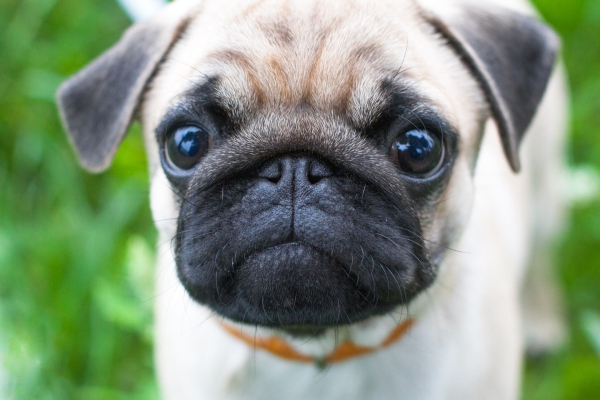
Glaucoma, a condition characterized by increased pressure within the eye, can silently steal the joy of sight from our furry companions. Affecting both cats and dogs, it’s a serious medical issue that requires prompt diagnosis and treatment.
In this article, we’ll help you recognize the early warning signs of feline and canine glaucoma, so you can be a vigilant guardian of your pet’s eyesight.
What is Glaucoma in Pets?
Imagine a balloon filled with fluid representing your pet’s eye. Normally, a delicate balance maintains the pressure within this “balloon,” allowing for proper eye function and vision.

Another way of putting it: In a healthy eye, the clear internal fluid — the aqueous humor — maintains the normal shape of the eye and nourishes the inside tissues. A balance of fluid production and drainage keeps the fluid pressure at normal levels.
Glaucoma disrupts this balance.
The fluid drainage system in the eye becomes clogged, resulting in abnormally high pressure levels. This elevated pressure causes severe side effects, including damage to the optic nerve (the critical pathway connecting the eye to the brain) and damage to the retina, ultimately leading to blindness and pain if left untreated.
Two Types of Glaucoma
Primary Glaucoma
This inherited form, more prevalent in dogs than cats, arises from a malformation in the eye’s drainage system, hindering fluid outflow and causing pressure buildup.
Certain dog breeds, like Beagles, Basset Hounds, and Cocker Spaniels, are predisposed to this type.
In cats, primary glaucoma is rare, but Siamese and Burmese breeds seem to have a higher risk.
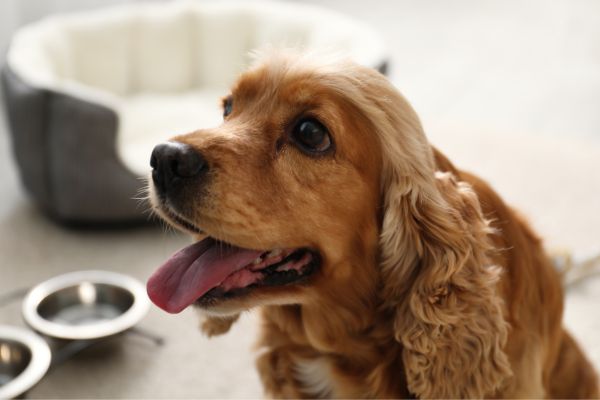
Secondary Glaucoma
This form stems from underlying conditions like inflammation, tumors, or trauma, which obstruct the drainage pathways or increase fluid production.
In cats, secondary glaucoma is more common than primary.
Signs and Symptoms to Watch For
Glaucoma usually starts in one eye, but frequently progresses to the other eye. Signs are generally subtle at first, and glaucoma can be tough to recognize in its early stages before permanent eye damage occurs.
Be on the lookout for these warning signs:
Redness and Bloodshot Eyes
This is a common early symptom, often mistaken for simple eye irritation. Redness and bloodshot eyes are a telltale sign of inflammation or increased pressure within the eye.
Squinting or Pawing at the Eye
As pressure builds within the eye, glaucoma becomes very painful, and pets often squint or rub their eyes to alleviate the pressure.
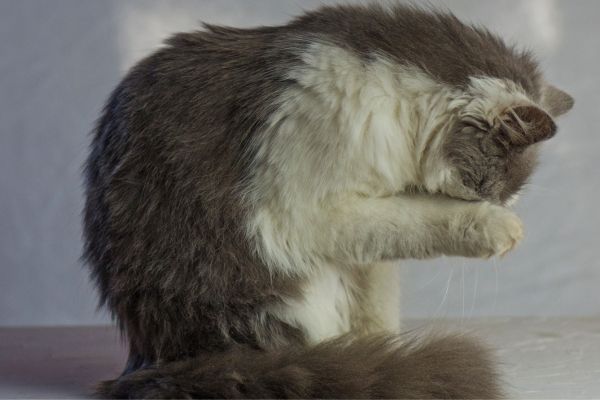
Lethargy and Loss of Appetite
Pets may stop eating and resist human touch. They might sleep more and avoid bright light.
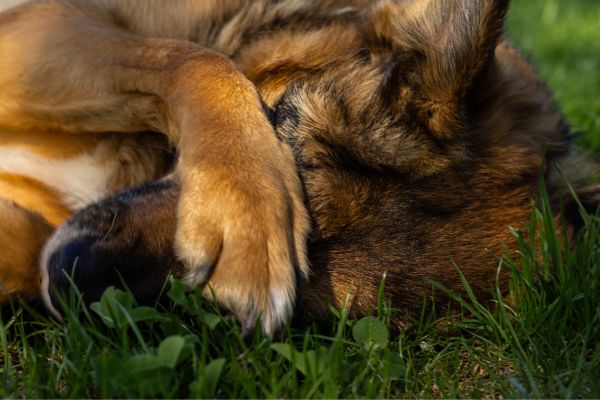
Changes in Vision
Pets may seem clumsy, bump into objects, and have difficulty navigating familiar spaces. This can an indicate vision loss.
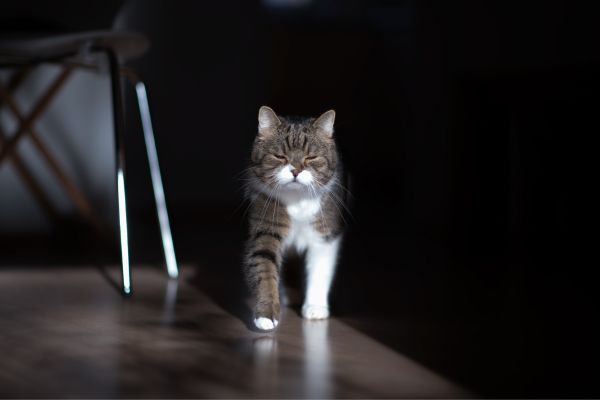
Cloudy or Blueish Cornea
The normally clear outer layer of the eye (aka, cornea) might appear hazy or bluish due to fluid buildup within the eye.
Dilated Pupils
Unnaturally enlarged pupils can be a sign of pain or increased pressure. In some cases, the pupils may become unresponsive to light.
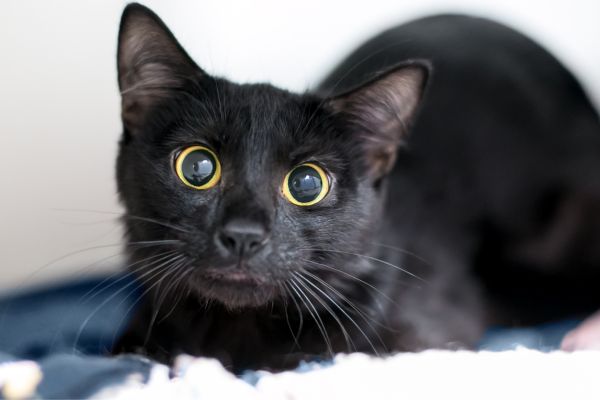
Bulging Eye
In advanced, later-stage cases, the eyeball may appear enlarged and protrude beyond the socket.
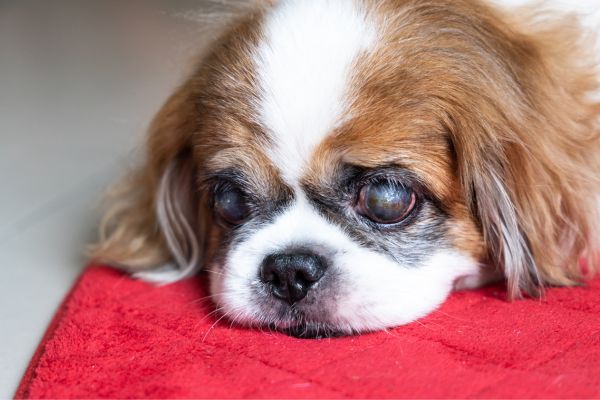
Diagnosis
While glaucoma can’t necessarily be avoided, if diagnosed early enough, it can be managed. To diagnose a pet’s eye condition, we perform a complete history, physical exam, and eye exam.
Additionally, we may recommend the following, depending on your pet’s specific needs:
- A separate visit to a veterinary ophthalmologist, who specializes in eye diseases
- Tonometry, which measures pressure inside of the eye with a small, hand-held instrument
- X-rays or ultrasound of the skull to identify other abnormalities or tumors
- Blood tests to try to determine the underlying cause, such as an infectious disease
Treatment Options for Glaucoma
The primary goal of treatment is to lower intraocular pressure and prevent further damage to the optic nerve.
If your pet is diagnosed with glaucoma, we will prescribe medications to help reduce the pressure within their eyes and make them more comfortable.
Depending on the severity and type of glaucoma, treatment options may include:
- Eye drops: Medications like prostaglandins and beta-blockers help increase fluid drainage or decrease fluid production.
- Oral medications: In some cases, oral medications like Diamox may be prescribed to reduce fluid production.
- Surgical therapy: Different types of surgical therapy may be recommended in an attempt to keep the pressure in the eye controlled.
- Laser surgery: Laser iridotomy creates a tiny hole in the iris to improve aqueous humor drainage, often used in primary glaucoma.
- Drainage surgery: In severe cases, a surgical procedure to create a new drainage pathway for the fluid may be necessary.
- Removal of the eye: In long-term cases, surgical removal of the eye may be recommended as a last resort because glaucoma is such a painful condition for your pet.
Living with Glaucoma
Once diagnosed with glaucoma, your pet will likely need ongoing monitoring and treatment to manage the condition effectively. Regular veterinary checkups are essential to track the pressure and adjust medication as needed.
It’s also important to manage any underlying conditions that may be contributing to the glaucoma.
- Avoid using flea and tick collars or sprays near your pet’s eyes, as these can irritate and potentially worsen glaucoma.
- Manage your pet’s weight, as obesity can contribute to increased intraocular pressure.
- Provide a stress-free environment for your pet, as anxiety can exacerbate glaucoma symptoms.
- Avoid head injuries and use protective eyewear during outdoor activities to help safeguard your pet’s precious peepers.
With proper management, many pets with glaucoma can live happy and fulfilling lives.
Your furry friend’s eyes are windows to their world – keep them clear and bright with vigilance and care.


